Dr. Mason Peck, head of the Space Systems Design Studio at Cornell University, answered a few questions for OrbitalHub readers about the Sprite spacecraft. Peck earned a B.S. in Aerospace Engineering from the University of Texas at Austin, and his M.S. and Ph.D. at UCLA as a Howard Hughes Fellow.
A team at the Space Systems Design Studio focuses on Sprite, a simple, feasible design of spacecraft systems printed on small wafers of silicon. This design packages traditional spacecraft systems onto a single silicon microchip.
DJ: Miniaturization brings along quite a few limitations: small payloads and data storage, and much less power available. Why pursue miniaturization when designing a spacecraft?
Mason Peck: In fact, I would disagree with the word–and the concept of–miniaturization. It implies that the goal is to shrink an existing space-system architecture or technology here. Instead, the goals are the following:
– Start from the bottom and work up, i.e. from the level of fundamental technologies, and find out how little it might take to create a space system. If we start by focusing on a mission and consider the problem from the top down, or if we merely try to implement an existing solution at a smaller scale, we miss out on lots of opportunities for innovation.
– Without prejudice, ask how we explore at this small scale? Specifically, how does a very tiny spacecraft exploit the physics of the solar system to navigate, reorient, scavenge power, and the other housekeeping tasks that are fundamental to space exploration.
– And then, with this basic technology concept in place, ask what missions are possible? This approach is known sometimes as “technology push,” where the availability of some new function or performance motivates a new sort of exploration.
So, we expect to discover a kind of parallel universe of exploration possibilities, which has remained hidden from us because of our parochial view of what a spacecraft consists of. I’ll give you some examples in response to your third question.
DJ: How far can miniaturization go?
M.P.: One of our most surprising discoveries is that commercial, off-the-shelf electronics components for mainstream contemporary applications like cell phones and iPods are vastly superior in performance to typical spacecraft electronics. Most people understand that spacecraft electronics are several generations behind the state of the art, and for good reasons such as needing radiation-hard parts, flight-proven reliability, etc. But what’s astonishing is just how far ahead consumer electronics are. We’ll be able to implement GPS-based orbit knowledge, radio communications, and attitude sensing all on about 1 cm^2 of integrated circuitry, using catalog components that anyone can buy. And they’re remarkably cheap, mostly because they’re made in the millions: single-chip GPS receivers, little CMOS cameras, etc. are no more than a few $ each in some cases.
The reliability or survivability of these off-the-shelf components is certain to be much poorer than flight-qualified parts. However, remember that at this scale of size and cost, fabricating and launching thousands or millions is entirely within reach. A single ChipSat may be unreliable, but the cloud of them may offer very high reliability. More than that, a cloud can be understood statistically, with notions like “statistical confidence,” which are very hard to come by when one is building a single, exquisite spacecraft.
A ChipSat will never replace Hubble, but it would not be expected to do so. Instead, ChipSats would form the basis of exploration missions that benefit from a large number of distributed, although coarse, measurements. More generally, this notion of “technology push” introduces a transformative idea for scientists. Instead of posing a science mission that presupposes a spacecraft architecture, let innovation in mission-science objectives couple with engineering innovation. That’s how we’ll do new, remarkable things.
DJ: Can you give some examples of mission scenarios envisioned for swarms of Sprite spacecraft?
M.P.: One of my favorites is that a Sprite may be able to enter a planetary atmosphere without parachutes, rockets, or a heat shield, and yet never burn up. Some of our early work on this problem for Earth’s atmosphere suggests that a 25 micron thick Sprite can reenter without burning up and maintain a cool enough temperature that electronics can continue to operate. So, reentering Sprites can sample the ionosphere, the mesosphere, and on down to the surface of the Earth. We’d get unprecedented measurements of spatial and temporal phenomena like turbulence and particle densities.
Another idea is to place a cloud of these Sprites between the Earth and the Sun, maybe at a so-called Lagrange point, which would be a sort of orbital equilibrium between the two. Each Sprite in the cloud would have the simple task of transmitting a single bit when solar-wind flux or magnetic flux exceeded some threshold, indicating a solar storm. This data would offer a distributed measurement for science, but at least as important it would provide a new type of advance warning of these storms, which can knock out radio communications on Earth.
Yet another application is a bit of science fiction, but it gets us thinking along new lines. Consider a particle accelerator. On Earth, these systems accelerate charged particles like electrons to relativistic velocities so that physicists can study subatomic phenomena. Now imagine the Sprite as a particle. It would be electrostatically charged, like a toy balloon on a dry day, and in that way resembles a very large electron. Could we build a kind of particle accelerator to launch Sprites out of the solar system at very high speed? The Navy already has a railgun that uses electromagnetic effects to launch large masses. Their recent successes show that the concept is perfectly sound. In fact, if you could direct the energy of their 30 kg railgun into a, say, 30 mg Sprite, that’s a factor of 1000 higher speed. Such a Sprite could be the first interstellar explorer. Michio Kaku and I have discussed the wild notion of a ring-shaped Sprite accelerator on the moon or in Jupiter’s orbit (in fact, the idea appeared on his Sci Fi Science TV show). In principle, such a launch system could send a Sprite to the nearest star system in a few decades.
DJ: The small mass and size of a Sprite spacecraft does not leave much room for radiation shielding. Especially during deep space missions, single events can take a spacecraft out of commission. How can Sprite spacecraft compensate for these inherent hazards of space travel?
M.P.: Absolutely right. Radiation will degrade the Sprite until it stops functioning. The easiest solution is simply to produce a rad-hardened chip. They’re not uncommon, although it’s expensive to design and build them. But it can be done, and amortizing that cost over millions of Sprites would make doing so a lot more appealing than how it’s done now, where we go to all that effort for a relatively small number of chips. But if you don’t want to get into rad hardening, remember that this effect is a statistical one. So, using a large enough number of Sprites for a mission would be a way to ensure that a desired fraction of them survive, even though a large number would fail. Again, we could design in this statistical reliability. And the more you use, the more reliably the mission meets its objectives.
DJ: Sprite is by definition a propellantless spacecraft. What type of propulsion can be employed?
M.P.: I wouldn’t be against trying to implement traditional propulsion at this scale. In fact, it’s been done, with mixed success. But the reason to pursue propellantless technologies is that chemical propulsion does not scale down well.
We find that several approaches do scale well. First, solar sailing is a clear winner. With a thin but still rigid silicon wafer, we can get performance benefits similar to the vast solar sails that have been proposed, but with the important advantage that the sail is not a floppy mess, difficult to deploy and steer around. The acceleration of a solar-sail Sprite increases with 1/L, where L is the length scale. As long as there are no limitations on thickness, a uniformly shrunken solar sail works better than its larger analogue. For example, a 1m solar sail accelerates 10x as fast as a 10m solar sail, as long as the thickness scales proportionately. That proportionate scaling may be tough to achieve, but what’s easy is the stiffness: a 25 micron Sprite is stiff enough that it needs no deployable booms or trusses, and it’s therefore effectively thinner (less mass for the area) than the larger sails.
A little harder to implement but even more intriguing is electrodynamic tether technology. Sprite sends a current through a wire that extends from the spacecraft, grounded in the ionospheric plasma. The current interacts with the Earth’s magnetic field, like the windings in an electric motor, producing a force. That force can accelerate the spacecraft. Just like the solar-sailing example, an ED tether is a lot more convenient when it’s shorter: it’s basically a rod, not a floppy string. The dynamics-related problems that the Space Shuttle tether experiments encountered would not arise here.
DJ: How many Sprite spacecraft are currently deployed and what kind of payloads do they have?
M.P.: There are three prototypes on the outside of the International Space Station. They’re not free-flying. They’re self-powered with solar cells, and they have their own on-board computers, radios, and other circuitry. They are their own payload in the sense that if they communicate, we’ll be able to confirm that Sprite’s unique communications architecture is a valid design. We didn’t have time (and we had no money, in fact) for a science payload per se.
DJ: Swarms of hundreds of decommissioned Sprite spacecraft orbiting the Earth could make mission flight control rooms very nervous. Are there any post-mission disposal methods considered for Sprite missions?
M.P.: Yes and no. Space debris is certainly a risk, but Sprites do not have to be debris. In low-earth orbit, their unique flight dynamics mean that aerodynamic drag very quickly pulls them back into the atmosphere. Specifically, a 325 km orbit would decay in about 2 days. Even at 500 km, they would reenter in weeks, at most. If they burn up, that’s that. If they don’t, it’s because they’re so delicate that they would never hurt anyone even if one were to land on a person on the ground. So, they clean up after themselves.
DJ: What are the areas with room for improvement in the design and manufacturing of chip-sized satellites?
M.P.: The next step will be that the design will transition from discrete parts to a single, application-specific integrated circuit (ASIC). That’s the real objective. It would be far lighter, less power-hungry, and more maneuverable than the current prototypes on ISS.
To find out more about the Sprite Spacecraft, Dr. Mason Peck, and his team at Cornell University, please visit the Space Systems Design Studio webpage. Paul Gilster of Centauri Dreams has also covered this topic in ’Smart Dust’ and Solar Sails and Tiny Spacecraft Point to Future Sails.











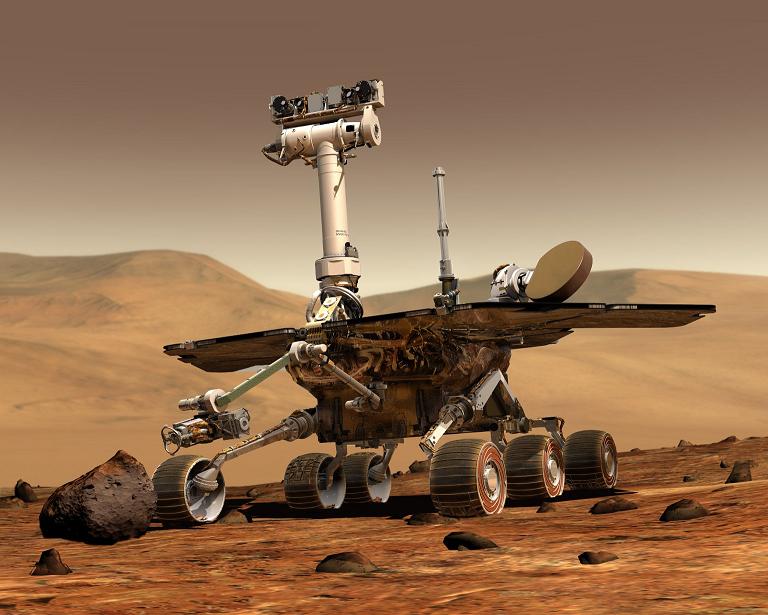


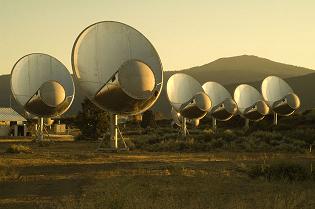

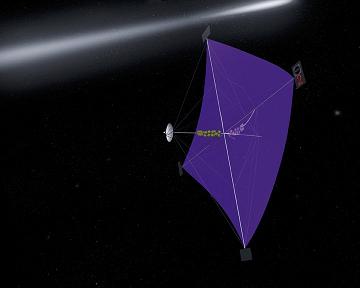
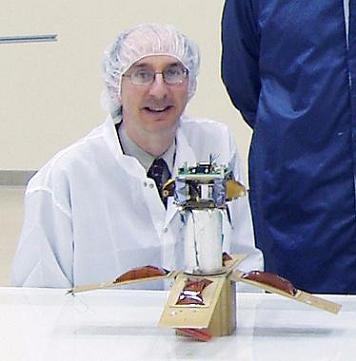
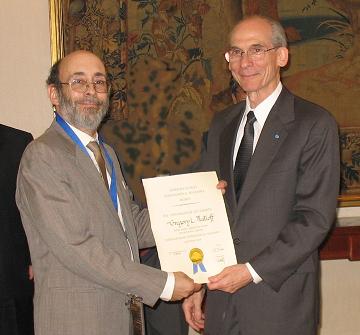

 Subscribe to blog posts using RSS
Subscribe to blog posts using RSS









